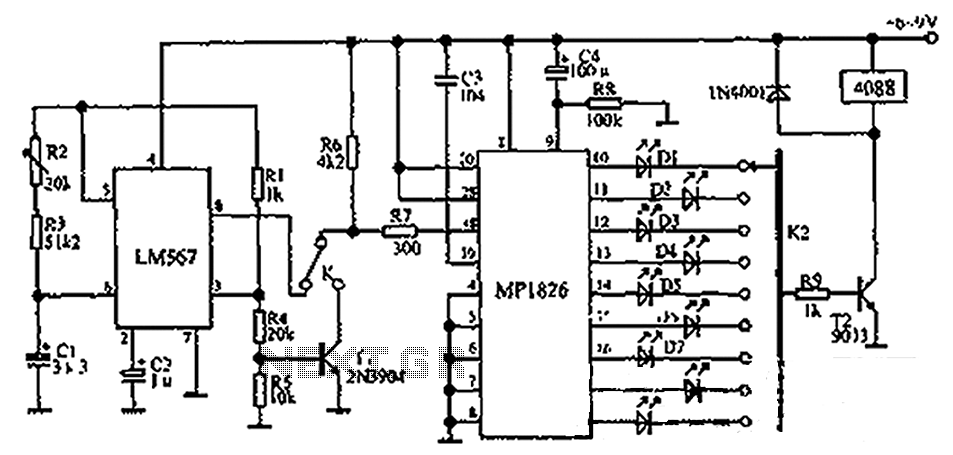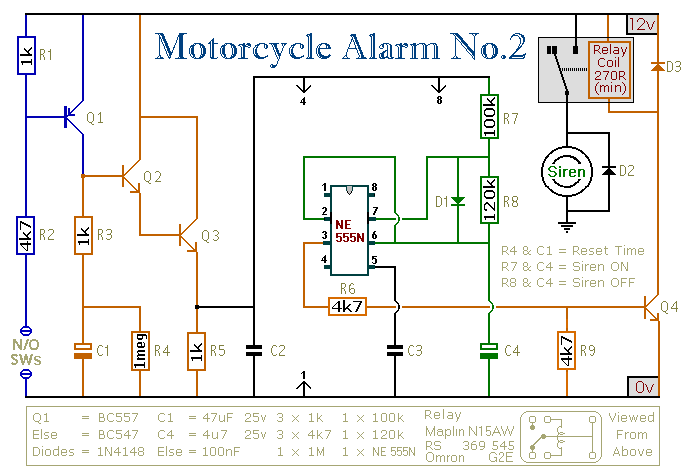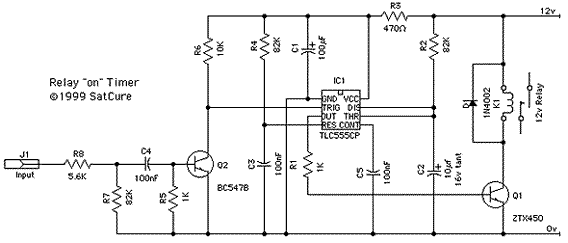
repeating interval timer

This circuit features an adjustable output timer that can re-trigger at specified intervals. The output duration can range from a fraction of a second to over half an hour, with the ability to repeat at consistent intervals from seconds to days and beyond.
The adjustable output timer circuit typically employs a combination of resistors, capacitors, and a timer IC, such as the 555 timer, to achieve its functionality. The 555 timer can be configured in either monostable or astable mode, depending on the desired operation.
In monostable mode, the timer produces a single pulse when triggered, with the duration of the pulse determined by the resistor-capacitor (RC) time constant. The output period can be adjusted by changing the values of the resistor and capacitor in the timing circuit. The output can be connected to various loads, such as LEDs, relays, or other electronic devices.
In astable mode, the 555 timer continuously oscillates between high and low states, producing a square wave output. This configuration allows the circuit to re-trigger at regular intervals without external triggering. The frequency of oscillation is determined by the resistors and capacitor connected to the timer, allowing for fine-tuning of the output period.
For longer intervals, additional components such as flip-flops or microcontrollers may be integrated into the design to extend the timing capabilities. These components can provide more precise timing control and the ability to program specific output durations and intervals.
Overall, this adjustable output timer circuit is versatile and can be implemented in various applications, including automation systems, timed lighting, and other scenarios requiring periodic activation of devices. Proper selection and configuration of components are crucial to achieving the desired timing characteristics and reliability of the circuit.This circuit has an adjustable output timer that will re-trigger at regular intervals. The output period can be anything from a fraction of a second to half-an-hour or more - and it can be made to recur at regular intervals of anything from seconds to days and beyond.. 🔗 External reference
The adjustable output timer circuit typically employs a combination of resistors, capacitors, and a timer IC, such as the 555 timer, to achieve its functionality. The 555 timer can be configured in either monostable or astable mode, depending on the desired operation.
In monostable mode, the timer produces a single pulse when triggered, with the duration of the pulse determined by the resistor-capacitor (RC) time constant. The output period can be adjusted by changing the values of the resistor and capacitor in the timing circuit. The output can be connected to various loads, such as LEDs, relays, or other electronic devices.
In astable mode, the 555 timer continuously oscillates between high and low states, producing a square wave output. This configuration allows the circuit to re-trigger at regular intervals without external triggering. The frequency of oscillation is determined by the resistors and capacitor connected to the timer, allowing for fine-tuning of the output period.
For longer intervals, additional components such as flip-flops or microcontrollers may be integrated into the design to extend the timing capabilities. These components can provide more precise timing control and the ability to program specific output durations and intervals.
Overall, this adjustable output timer circuit is versatile and can be implemented in various applications, including automation systems, timed lighting, and other scenarios requiring periodic activation of devices. Proper selection and configuration of components are crucial to achieving the desired timing characteristics and reliability of the circuit.This circuit has an adjustable output timer that will re-trigger at regular intervals. The output period can be anything from a fraction of a second to half-an-hour or more - and it can be made to recur at regular intervals of anything from seconds to days and beyond.. 🔗 External reference





